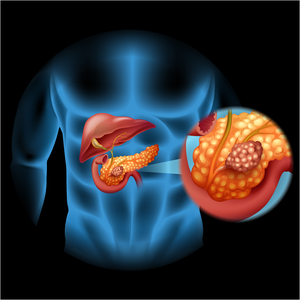
Pancreatic Cancer - One of the Deadliest Cancers
Pancreatic cancer, or also colloquially known as pancreatic cancer, is considered one of the deadliest types of cancer and this despite the fact that this disease occurs far less frequently than other types of cancer. Statistically, only 7 to 8 percent of those affected survive the first five years after being diagnosed. This is mainly because the cancer is often diagnosed much too late, metastases have already formed and new tumours often appear even after successful treatment. But doctors are hopeful that pancreatic cancer will soon become more treatable.
The tricky thing about pancreatic cancer
The pancreas is one of the largest glands in the human body and produces vital enzymes and hormones. It is also responsible for digestion and metabolism. Both men and women can get pancreatic cancer. While men are diagnosed with pancreatic cancer at an average age of 72, the average age of women is about 75. It is probably true for both sexes that there are usually no symptoms beforehand. Only some patients may develop jaundice if the tumour presses on the bile duct. But most patients who complain of upper abdominal or back pain probably first consult an orthopaedist or general practitioner, which is why pancreatic cancer is often diagnosed much too late. If other rather unspecific symptoms such as nausea, vomiting or weight loss are also present, the tumour has probably already progressed so far that the pancreas no longer produces enough insulin and diabetes mellitus has often already developed. Since it is also true for pancreatic cancer that the earlier a diagnosis is made, the better, late diagnosis is probably the pitfall of this type of cancer. Unlike other types of cancer, there is currently no reliable test for early detection of pancreatic cancer.
Chances of cure through surgery
For most cancers, including pancreatic cancer, surgery is one of the most important treatment options. However, only in about one in five patients is the tumour detected early enough to be operated on. In the case of pancreatic cancer, this is only possible if the tumour is in the head of the pancreas. In that case, the right part of the pancreas, together with the gallbladder, and part of the bile duct together with the duodenum can be removed. However, one operation is not enough. Since the pancreatic cancer often forms again after the operation, the patient must undergo chemotherapy to kill the remaining cancer cells.
Improved chemotherapy
Until now, chemotherapy with the drug gemcitabine was the standard of care. However, since a Canadian research group presented a study with a four-drug combination in 2018, the survival chances of patients suffering from pancreatic cancer could be significantly improved. The goal of the doctors is now to reduce the size of the tumour of patients who are not actually candidates for surgery by means of chemotherapy, in order to make the cancer operable.
Great progress in surgery
Patients who have pancreatic cancer should definitely have surgery in a special centre where such complex interventions are standard. Some surgical centres now even use modern robot technology. The advantage of this is that the entire abdominal cavity is not cut open, but instead a keyhole technique is used. In this way, not only the duration of the operation is shortened, but also the hospital stay. This creates good conditions for patients to start chemotherapy in as stable a condition as possible.
